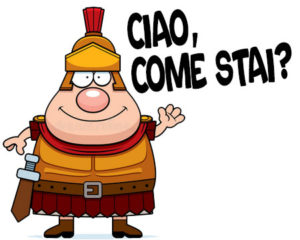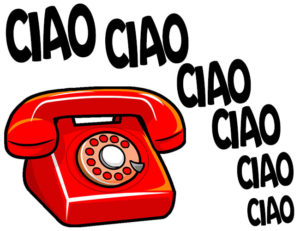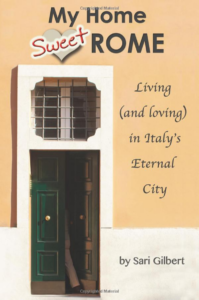When I first wrote about the “ciao” several years ago, my idea was to let visitors to Italy know that using this form of greeting – good for both a hello and a goodbye – also implied more about social status and social relations than probably was ever imagined in the US or other English-speaking countries where a lot of people use it to bid adieu.
My goal at the time was to make sure foreigners to Italy knew when its use was appropriate and when it was not. In recent years, things have changed somewhat, especially in Rome where “keshual” (as most Italians tend to pronounce the word “casual”) is the name of the day. And the same goes for areas of the city such as Trastevere (where I live), Testaccio, Garbatella and Pigneto, or neighborhoods in other cities where a lot of young people live or congregate.
Let’s go back a bit in time. School children and students have always used the casual form of address among themselves. And the same has always held true for people in the workplace; doctors to doctors, journalists to other journalists, policemen to other cops, and so on.
But today this lack of formality – of which the “ciao” is an essential part – has spread throughout the Italian peninsula. In a way this is ironic, since most Italian dictionaries will tell you that the term derives from a 17th century Venetian salutation, s’ciao – itself from the late Latin slavus, or slave – and which basically meant “I am your servant” and was thus a form of near reverential address.
This shouldn’t represent much of a surprise. After all, Italian society is far less structured than when I first came here as a student in the 1960s. So today, people in their 30s would probably start saying “ciao” to one another at the get go. Your barista (please pronounce this correctly, ba-REE-sta, with the stress on the middle syllable) will probably greet any customer he’s seen more than twice with a “ciao”. And young salespeople in hip clothing or shoe stores would no doubt immediately welcome shopper-contemporaries in this fashion. The fact that most people in my parking garage say “ciao” to the parking attendants when they pick up or deliver their vehicles is another sign of change.
To sum it up, this is a far cry from the old days when you would never say “ciao” to a person you had never met before –unless he or she was a child. Using the “ciao” as a form of greeting (or salutation) to a person you were not on familiar terms with was simply a no-no.
Mind you, to some degree this is still the case. Using the ciao inappropriately could smack of disrespect, especially when you address a person significantly older than yourself. At the very least it would certainly mark you as a “straniero”, a foreigner.
So if you have respect for Italian customs and you want to act like an Italian (and why else would you come here?), here are a few basic guidelines. You don’t say ciao to the taxi driver. You don’t say ciao when you walk into a new restaurant. You don’t say ciao when you walk into a shop where you are not known or go up to a counter in a department store. You don’t say ciao to the ticket seller at the train station or to the conductor on the train if one actually turnsup to take your ticket. Here in Italy, the proper way to greet people who are not your friends or people who are part of your immediate universe, is still Buongiorno (or Buona Sera if it’s after three p.m.) Of course, nothing will happen if you do use the ciao out of context. It will simply be a sign that you are unaware of or uninterested in the customs of a foreign country.
A single “ciao” = hello
A double or triple “ciao” = goodby
A multiple ciao (ciao ciao ciao ciao ciao) by some (not me) on the telephone.






Any comments? We’d love to hear them!